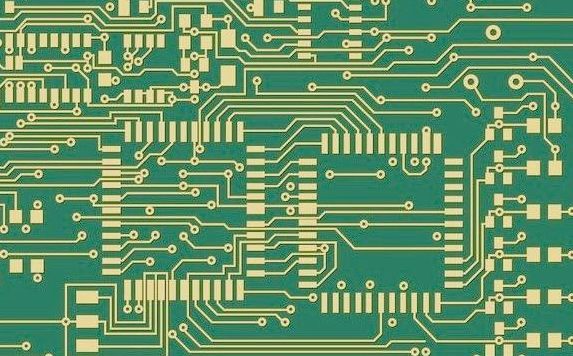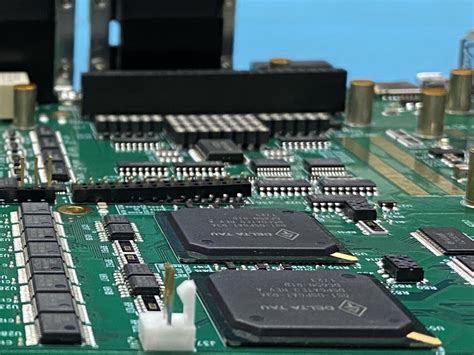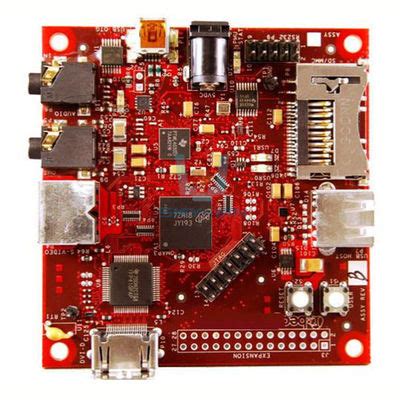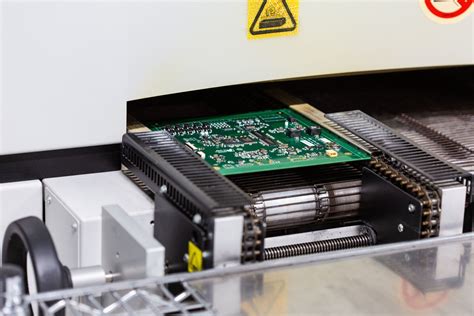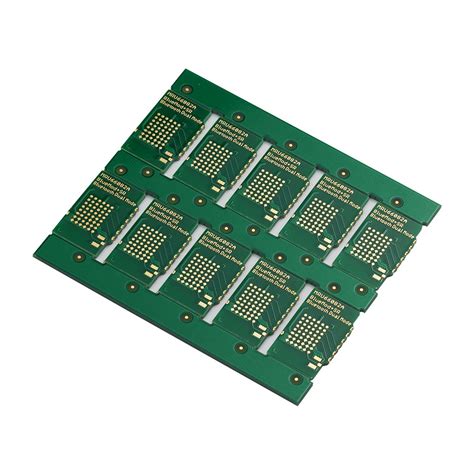Unlocking Excellence: The Best PCB Assembly Services Revealed
Key Takeaways
When it comes to pcb assembly, selecting the right service provider is pivotal for the success of any electronic project. A well-informed choice can streamline your production process and enhance the overall quality of your products. It’s essential to recognize that not all pcba services are created equal; therefore, you need to assess key factors such as experience, technology utilized, and customer support. Furthermore, exploring case studies from leading pcb assembly firms can provide valuable insights into their operational efficiencies and quality assurance practices. Many industry leaders emphasize the importance of balancing cost efficiency with quality, ensuring that you’re not jeopardizing your project by opting for the cheapest solution. By unlocking this knowledge, you equip yourself with the tools to make astute decisions in selecting a pcb assembly service that aligns perfectly with your business needs and objectives.
Understanding PCB Assembly: A Comprehensive Overview
PCB assembly, often shortened to PCBA, refers to the process of soldering electronic components onto a printed circuit board. This essential step in electronics manufacturing transforms a simple board into a functioning unit capable of powering various devices. The PCB assembly process typically involves several key stages, including the placement of components, soldering, and testing. Understanding these stages is crucial for anyone involved in electronic production, as every step directly affects the overall quality and reliability of the final product.
At the heart of quality PCB assembly is the precision involved in component placement. “Precision matters,” especially when dealing with tiny components that require meticulous attention. An error at this stage can lead to significant issues in functionality later on. Moreover, selecting the appropriate soldering method—be it wave soldering or reflow—is vital for ensuring that connections are secure and reliable.
Additionally, quality control during various phases of pcb assembly cannot be overstated. Effective testing methods, such as Automated Optical Inspection (AOI) and functional testing, ensure that any defects are identified before products reach consumers. It’s essential for businesses to partner with reliable service providers who implement stringent quality assurance measures.
When assessing different providers for your PCB assembly needs, consider not only their expertise but also their commitment to embracing innovations in technology that can enhance production efficiency while maintaining high standards. By understanding each aspect of PCBA, stakeholders can make more informed decisions that will ultimately lead to successful and reliable electronic devices.
Key Factors in Choosing the Best PCB Assembly Service
Selecting the right PCB assembly service, or PCBA, is crucial to achieving a successful electronic manufacturing outcome. When evaluating potential providers, several key factors should be considered. First and foremost, quality assurance processes are essential. A reputable service will have rigorous testing standards in place to ensure that each board meets industry benchmarks.
Next, it’s important to look at manufacturing capabilities. The best PCB assembly services can handle a wide range of services, from prototype development to full-scale production. In addition, assessing their technological advancements can offer insights into their ability to meet current and future demands in the electronics sector.
Cost efficiency is another critical factor. While it’s tempting to choose the least expensive option, it’s essential to consider what you are getting for your money. Often, providers that offer competitive pricing also maintain high standards for quality and service.
Lastly, consider the level of customer support they offer throughout the process. A responsive team is vital for addressing questions or issues that may arise during the manufacturing journey.
Here’s a comparative look at some essential characteristics of leading PCB assembly providers:
| Factor | Description | Importance |
|---|---|---|
| Quality Assurance | Testing and validation processes | High |
| Manufacturing Capabilities | Range of services offered | Medium |
| Technological Advancements | Use of modern methods and equipment | High |
| Cost Efficiency | Balancing price with quality | Medium |
| Customer Support | Responsiveness and communication channels | High |
By thoroughly evaluating these factors, companies can make informed decisions when selecting a service for their pcba needs, ultimately leading to better project outcomes and maximizing their investments in electronic components.
Top Providers: Who Are the Industry Leaders?
When it comes to PCB assembly, identifying the right service provider is crucial for the success of any electronic project. Leading companies in the industry stand out due to their commitment to quality, efficiency, and innovation. These providers utilize advanced technologies and skilled professionals to ensure that every aspect of the PCBA process is meticulously executed. Notable industry leaders offer tailored solutions that cater to diverse needs, enabling businesses to scale production while maintaining rigorous standards. Their comprehensive capabilities often extend from prototyping and low-volume runs to high-volume manufacturing. By focusing on environmental sustainability and adherence to international standards, these top players not only enhance performance but also set benchmarks for reliability. As you navigate through available options, understanding what makes these providers exceptional can lead you towards making an informed decision that aligns with your specific PCB assembly requirements.
Quality Assurance in PCB Assembly: What to Look For
When selecting a pcb assembly service, understanding the principles of quality assurance is crucial. A reliable pcba provider must demonstrate robust quality control measures throughout the manufacturing process. One critical aspect to assess is whether the service follows internationally recognized standards, such as ISO 9001 or IPC-610, which ensure a high level of quality and consistency in production. Furthermore, examining the inspection processes in place—such as automated optical inspection (AOI) and functional testing—can give insights into their commitment to quality assurance. Another important factor is sourcing materials from reputable suppliers; this ensures that the components used in your pcb assembly are dependable and perform reliably in the final product. Additionally, a transparent communication channel between you and your pcba provider can aid in swiftly addressing any potential issues that may arise during assembly. Ultimately, by prioritizing these key elements of quality assurance, you can significantly enhance the likelihood of receiving a top-quality product from your chosen PCB assembly service.
Cost Efficiency vs. Quality: Striking the Perfect Balance
In the world of pcb assembly, the tension between cost efficiency and quality is often a pivotal challenge for businesses. Many organizations are drawn to providers that promise low prices, yet this can sometimes compromise the integrity of the final product. On the other hand, investing in high-end services may lead to superior durability and performance but can also stretch budgets to their limits. To strike the optimal balance, one must conduct thorough research into potential pcba manufacturers, evaluating their past projects and customer reviews. It’s essential to verify if these providers utilize advanced technology and adhere to stringent quality control processes. By prioritizing firms that demonstrate a commitment to both reasonable pricing and exceptional craftsmanship, companies can achieve a successful synthesis of cost-efficiency and quality in their pcb assembly endeavors. Ultimately, making strategically informed decisions will ensure not only financial viability but also robust end products that meet market standards effectively.
Innovations in PCB Assembly Technology: A Glimpse Ahead
The pcb assembly landscape is evolving rapidly, driven by advancements in technology and increasing demand for more sophisticated electronic components. One of the most significant innovations in this field is the rise of automated assembly processes, which enhance precision and reduce production times. Automation not only streamlines the workflow but also minimizes human error, thereby improving the overall quality of Printed Circuit Board Assembly (PCBA). Additionally, new materials such as flexible PCBs are gaining traction, allowing for designs that cater to wearables and compact devices.
Another standout trend is the integration of smart manufacturing principles into pcb assembly operations. This includes the use of data analytics to monitor production efficiency and quality control measures in real-time. By utilizing advanced software tools, manufacturers can predict potential issues before they arise, thereby ensuring that defects are caught promptly. Furthermore, innovations like 3D printing are reshaping prototyping phases, enabling quicker iterations and more creative designs that can lead to unique applications across various industries.
As the world continues to embrace miniaturization in technology, innovations like microvias and high-density interconnection techniques are becoming essential for producing compact yet powerful devices. These advancements not only push the boundaries of what is technically feasible but also support the growing trends toward modular electronics. In this competitive environment, understanding these emerging technologies is crucial for companies aiming to stay ahead in producing high-quality PCBs that meet stringent market demands.
Common Pitfalls to Avoid When Selecting a PCB Assembly Service
Selecting a PCB assembly service is a critical decision that can significantly impact the success of your electronic project. One common pitfall is failing to thoroughly vet potential providers. It’s essential to assess their reputation and customer feedback; relying solely on price can lead to compromised quality. Another mistake is underestimating the importance of quality assurance processes. Ensure that the company adheres to strict standards and has reliable testing measures in place, such as Automated Optical Inspection (AOI) and Functional Testing, which are crucial for ensuring every PCBA meets required specifications.
Many companies overlook communication quality, which is vital throughout the assembly process. Clear lines of communication can help preemptively address issues and streamline project timelines. Additionally, before committing, consider the provider’s ability to adapt to advancements in technology; staying updated with innovations can provide significant benefits in efficiency and performance for your PCB assembly needs. Lastly, ensure that you understand their lead times and any associated costs upfront, as hidden fees can turn an initially appealing offer into an expensive gamble. By being aware of these pitfalls and conducting thorough research, you can make more informed choices for your PCBA requirements and enhance your project’s overall success.
Case Studies: Success Stories from Leading PCB Assemblers
Examining real-world examples can illuminate the benefits and capabilities of pcb assembly services. For instance, a prominent technology startup focused on wearable devices sought a pcba partner to accelerate their product launch. With tight deadlines and high expectations for quality, they turned to a leading assembler known for their advanced manufacturing techniques and commitment to excellence. This collaboration resulted in not only on-time delivery but also enhanced product performance due to meticulous quality control measures in the pcb assembly process.
Another case worth noting involves an established automotive manufacturer that needed to optimize its supply chain. By engaging with a top-tier pcba provider, they were able to reduce costs while improving the reliability of their electronic components. The assembler utilized innovative practices, such as automated testing and real-time data analytics, which helped minimize errors and enhanced overall efficiency in the pcb assembly process.
These success stories underscore the critical role that choosing the right pcb assembly service can play in achieving business objectives. It’s not merely about finding a service provider; it’s about establishing a partnership that fosters innovation, guarantees quality, and supports the long-term growth of your projects. Exploring these real-life applications offers valuable insights into how different companies have unlocked excellence through strategic collaborations in the world of pcba technology.
Conclusion
In navigating the complex landscape of PCB assembly services, it’s vital to recognize the importance of choosing a provider that not only excels in quality but also aligns with your specific needs. The best PCB assembly services prioritize effective communication, robust quality assurance programs, and technological advancement. By opting for a company that embraces innovation, you can ensure your printed circuit board assemblies (PCBA) meet industry standards while enhancing operational efficiency. Remember to assess potential partners for their expertise in handling your specific project requirements, their capacity for scalable solutions, and customer testimonials that reflect reliability and service excellence. Ultimately, the right choice will empower you to unlock excellence in your electronic manufacturing endeavors with confidence and foresight.
FAQs
What is PCB assembly?
PCB assembly, often referred to as PCBA, is the process of connecting electronic components to a printed circuit board. This process ensures that the assembled boards can support various electronic devices and applications.
How do I choose the best PCB assembly service?
When selecting a PCB assembly service, consider factors such as quality, cost efficiency, and delivery timelines. Evaluate their reputation in terms of customer satisfaction and technical expertise.
What should I look for in quality assurance for PCB assembly?
It’s essential to seek a provider that implements rigorous quality assurance processes. Look for certifications like ISO 9001, which indicates adherence to industry standards, and ask about their testing methods used during the assembly phase.
Are there common pitfalls when selecting a PCB assembly service?
Yes, some common pitfalls include overlooking cost transparency, underestimating timelines for project completion, and neglecting to evaluate the provider’s technological capabilities. Doing your due diligence can help mitigate these risks.
What innovations are currently shaping the PCB assembly industry?
Recent innovations include advancements in automated soldering processes, enhanced software for design verification, and environmentally friendly materials. These developments contribute to increased efficiency and sustainability within the PCBA landscape.


